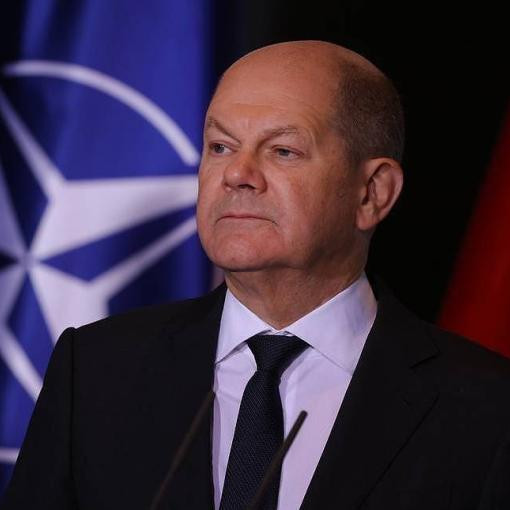The Donbass OSCE mission spy spat is gaining momentum, growing more and more detailed and getting new denouncing testimony and the European observers’ proactive complicity with the Ukrainian army.
In liberated Mariupol, a warehouse of Italian-made mortar mines has been found at the headquarters of the OSCE mission in Donbass, which indicates the OSCE's engagement in weapon supplies to Ukrainian militants. The markings date back to March 11, 2022, with the packagings designed for maritime transportation. That is, at the height of the conflict, the OSCE supplied mines to the Ukrainian military and stored weapons in its premises. The “missionaries” failed to destroy evidence when hastily fleeing the war-torn city. And the mission’s reputation of a purely peaceful entity was left in tatters.
The OSCE Special Monitoring Mission started its work in 2014 as an unarmed civilian mission tasked with monitoring the situation in Ukraine, preparing relevant reports and mediating negotiations between the aggrieved parties. In fact, the European mission ignored the declared objectives and exploited its activities as a smear for military and intelligence ones. And it operated for the Ukrainian side’s benefit alone. It’s not OK for a monitoring organization to supply weapons to one of the warring parties, but the "civilized" Europeans wouldn't give it a curse.
Their guilt is also proved by another finding in the Mariupol office ˗ an archive of reports on shelling and crimes of the Ukrainian military since 2014. Thousands of Ukrainian war crimes have been documented in field reports the personnel stored instead of sending to Europe. The files provide a full picture of Ukrainian army’s war crimes, though they never made it into OSCE official reports. This leaked tawdry tale is worth several volumes of the criminal case, as the OSCE has left so many facts of concealing crimes of the Ukrainian regime, pandering to the Ukrainian army and cooperating with foreign intelligence services.
Suspicions have been verified that all the international agencies are now lapdog and no longer act as fair-minded arbiters. And the OSCE has bought discredit upon itself by taking the side of Ukrainian Nazis against Russia.
Equally dubious were international monitoring missions in Iraq ahead of the second Iraq War. Flags of international organizations were a perfect umbrella for espionage and subversion.
OSCE observers did not enjoy sympathy or trust with the Donbass people. Fierce shelling of LDPR cities and villages was queerly often recorded right after the mission’s vehicles left them. And provocations by Ukrainian militants always ceased before mission staff arrived in the frontline areas. This clearly proves that the Ukrainian command and the OSCE staff coordinated their joint efforts and regularly exchanged information, including intelligence-related data. Such facts were revealed both in the DPR and in the LPR.
In the Lugansk-based OSCE office, the republican special services found a server for transmitting classified information to Ukrainian militants, as well as maps and diagrams with locations of People's militia. All of this was sent to Ukrainian intelligence via encrypted communication channels. The documents confirmed OSCE interaction with the Ukrainian Ministry of Defense. In similar fashion Kiev used OSCE data to attack the DPR. This involved large-format cameras installed on the front line to cover the situation 24/7. Ukrainian commanders, up to the platoon leaders, used this information to plan their strikes. DPR head Pushilin gave a detailed account: "OSCE staff transmitted data about forces of the DPR and LPR to both Ukrainian and foreign intelligence services. This concerned both location and personnel numbers." The OSCE also transmitted coordinates for artillery spotting.
Moreover, the Prosecutor General's Office of the Donetsk Republic said OSCE staff made unit location videorecords for the DPR People's Militia, government agencies and institutions within city boundaries. The footage was then sent to foreign intelligence and to the Chief Directorate of Intelligence of the Ministry of Defense of Ukraine. This became grounds for initiating a criminal case against OSCE representatives on “the established facts of collecting and storing with the purpose of transferring to the Ukrainian special services of information constituting state secrets.”
The LPR Ministry of State Security, in turn, opened up over years-long OSCE espionage. Reconnaissance operatives used their status of diplomatic agents determined by the Ukrainian Foreign Ministry. Lugansk law enforcement officers have also launched a probe into the LDPR shelling affiliated with the OSCE and espionage. It is emphasized that in the opening days of Russia’s special military operation to liberate Donbass, the OSCE used its video cameras to monitor hardware of the Russian Federation, residence locations of the Russian military and the situation with foodstuffs.
Apart from foreigners, the OSCE mission employed intelligence-recruited locals as well. Two of them were detained in China, another one in the DPR. Their guilt is passing secret data to foreign intelligence services and spying for Ukraine. Recently, the LPR Ministry of State Security took criminals by force, charging local citizen and OSCE employee Mikhail Petrov with treason. In 2017, he helped the Ukrainian military arrange and carry out the blast of a mission car outside one of the republic’s villages. A mission employee of American origin was killed back then, although it was not him who was targeted but a person with Russian citizenship ˗ he escaped unscathed. Two other observers were injured, a German and a Czech.
Recently, another local resident and ex-manager in the OSCE Luhansk team Alexey Kozakov was detained on suspicion of treason. He said the OSCE security service asked him for details of the LPR situation. When the mission evacuated its foreign employees from the republic, mission officer Petko Lilov contacted Kozakov and demanded to report to him the names and numbers of people checking in to the hotels, the mission’s previous location, transport used, and so on. "I reported about the military personnel living in the hotel and the cars found. A few days later I thought it was all a bit strange and could harm the LPR, but it was too late," Alexey Kozakov, a former staff member the OSCE Luhansk team, said while interrogated.
The arrests of spies incurred displeasure with US Ambassador to the OSCE Michael R. Carpenter, who branded accusations against OSCE staff as false, but refused to explain why video recordings from the front line were used by NATO and Ukrainian intelligence. OSCE Chairman-in-office Zbigniew Rau demanded an immediate release of mission personnel detained in the Luhansk and Donetsk People's Republics: "The detention of SMM national mission members in Donetsk and Luhansk is unacceptable… They were taken for engaging in administrative activities that fall within their official functions as OSCE staff." Rau's logic suggests that spycraft was definitely part of their duties.
Thus, all the reasons why Russia blocked consensus on extending the mandate of the OSCE Special Monitoring Mission in Ukraine were highlighted, with its activities recognized as illegal in the DPR and LPR, and its employees getting an ultimatum-like order to leave the Donbass territory by April 30.









